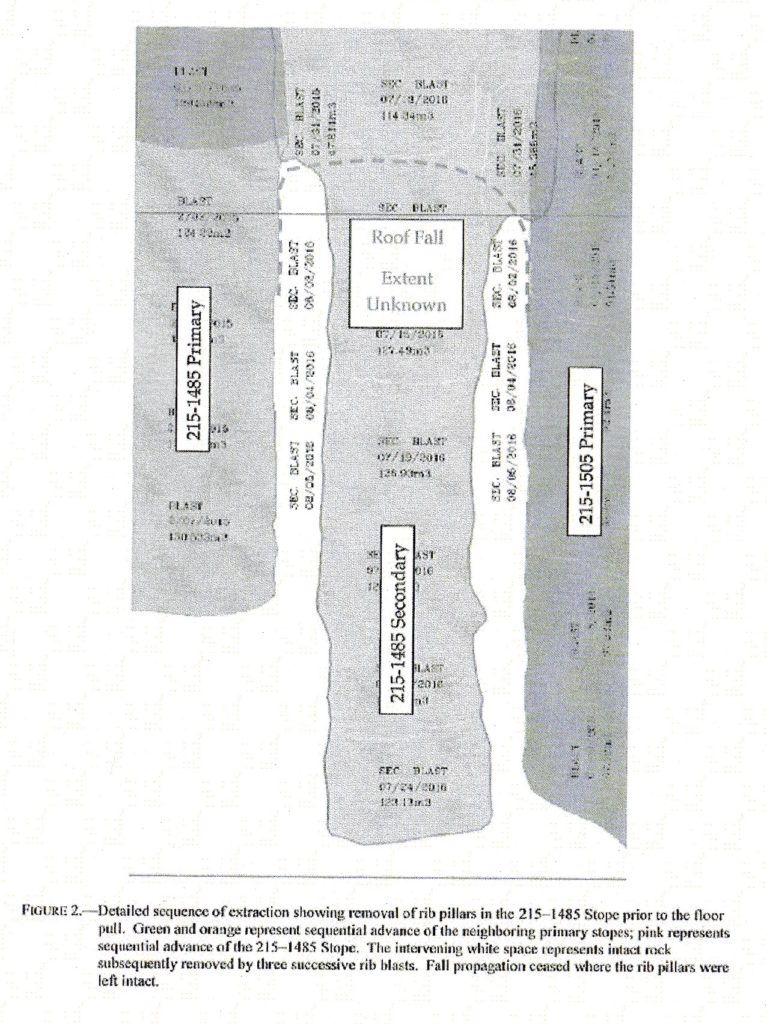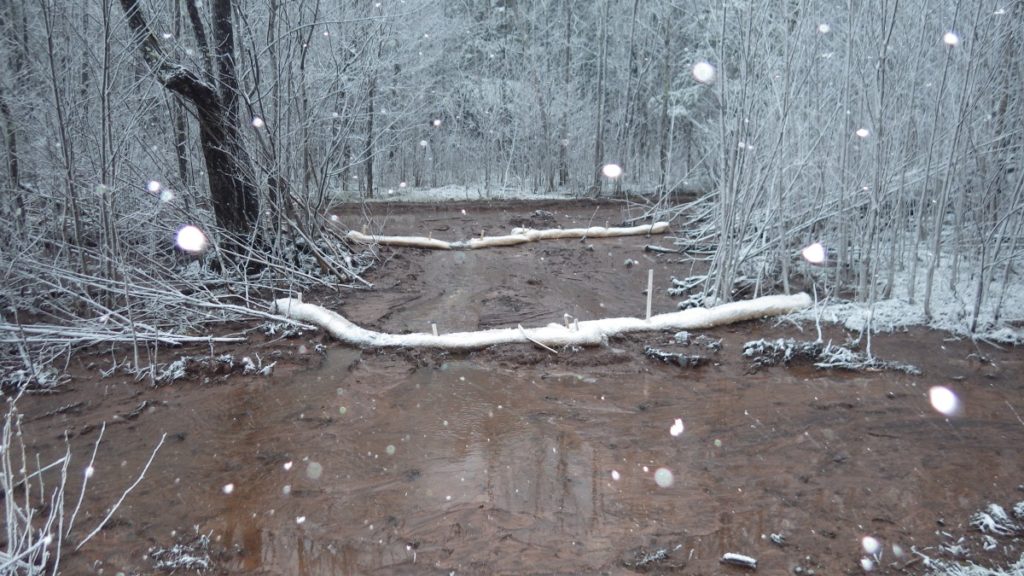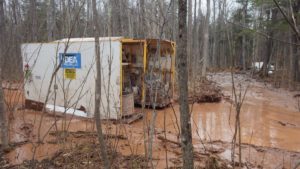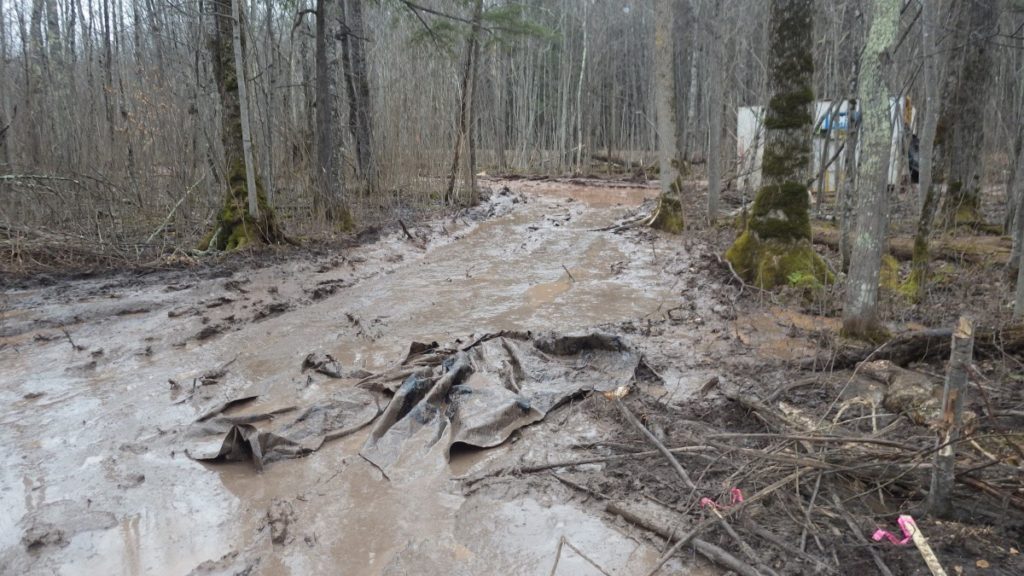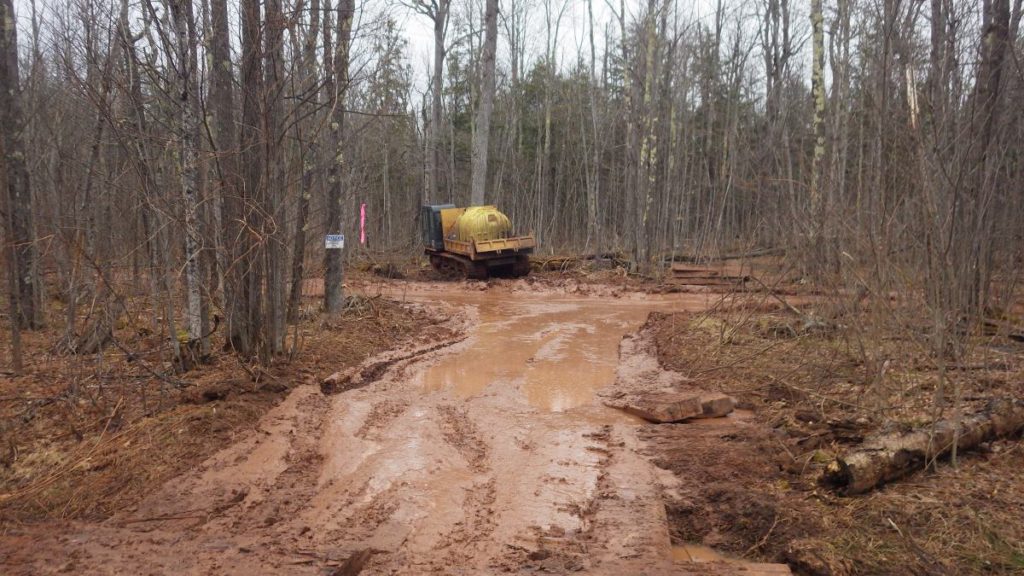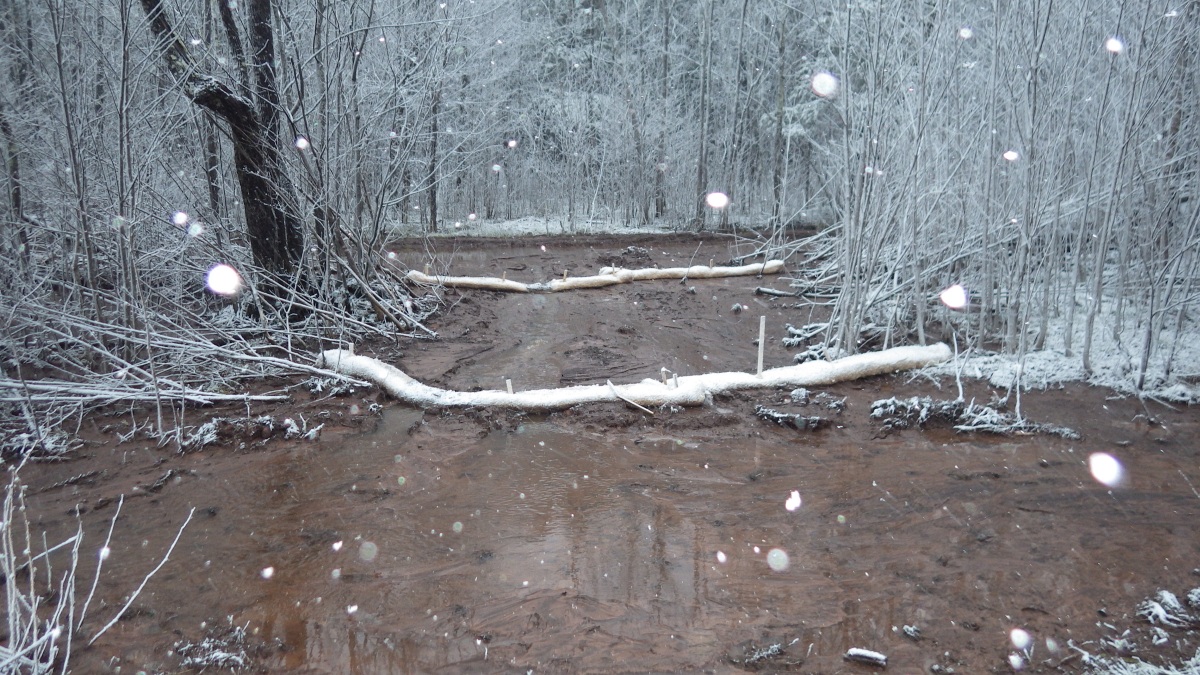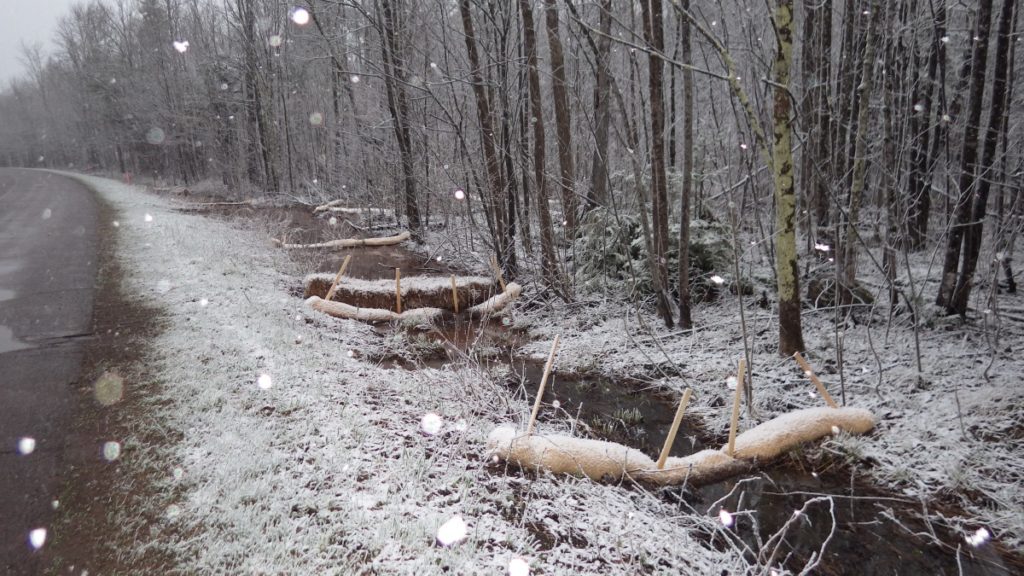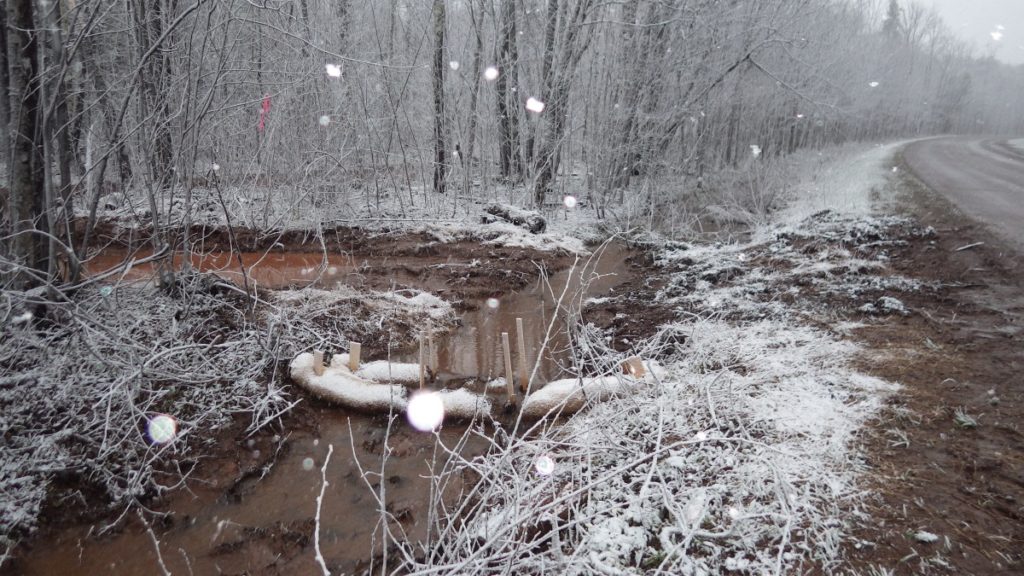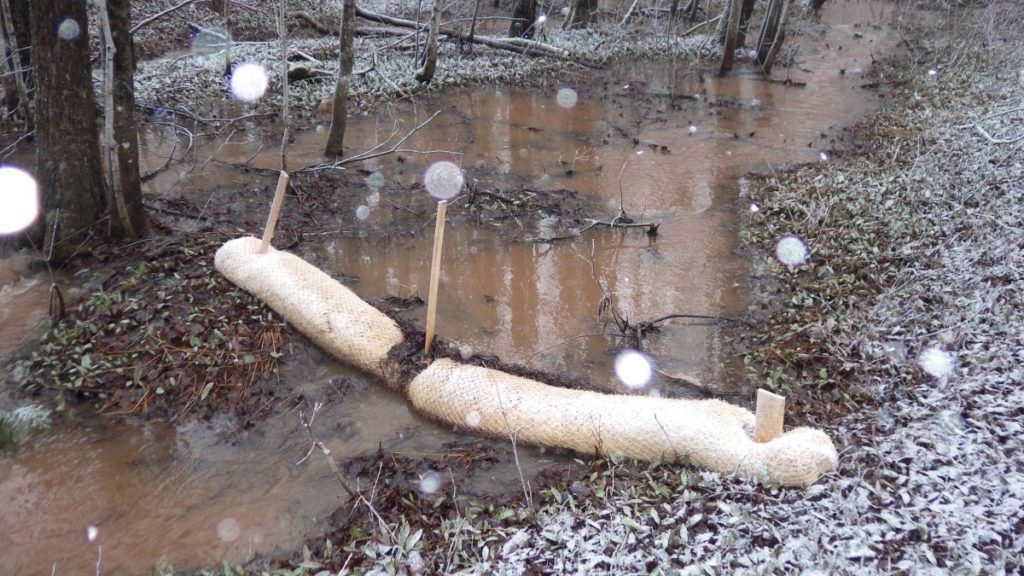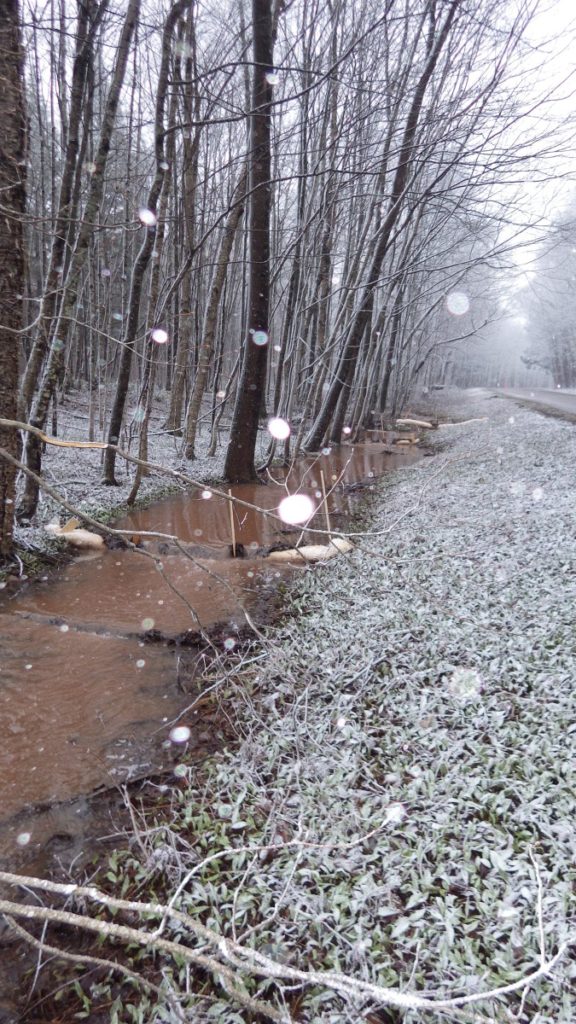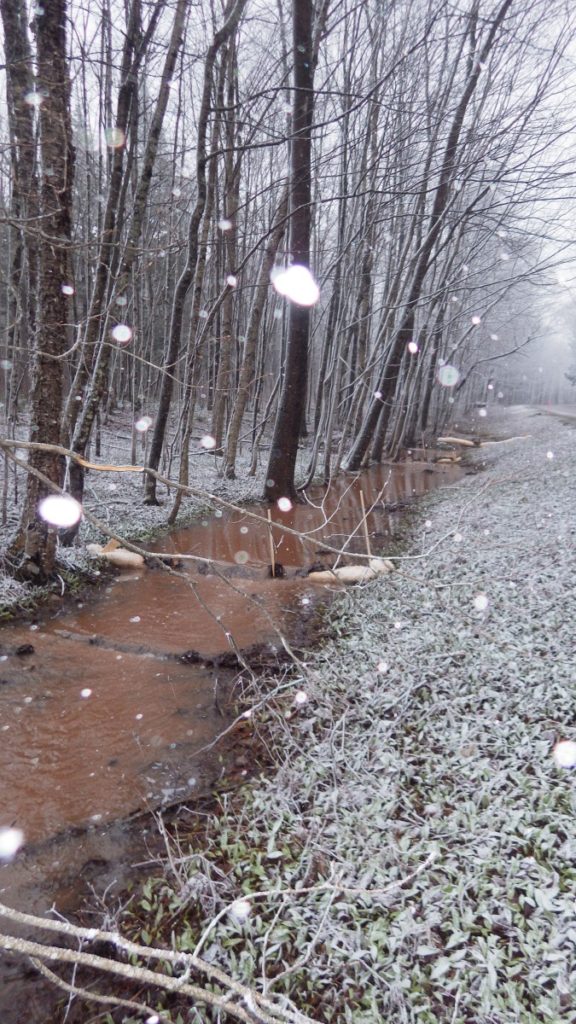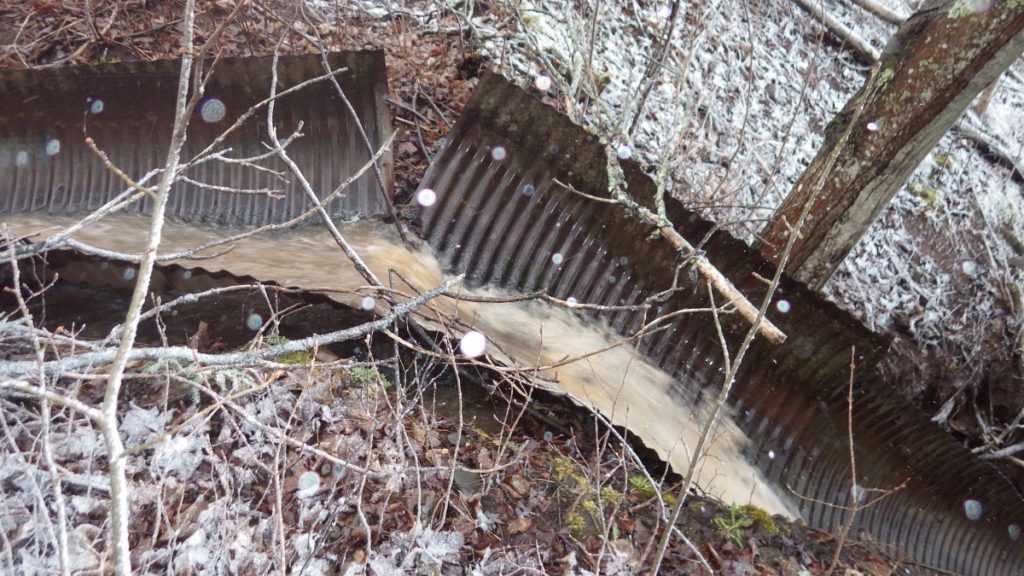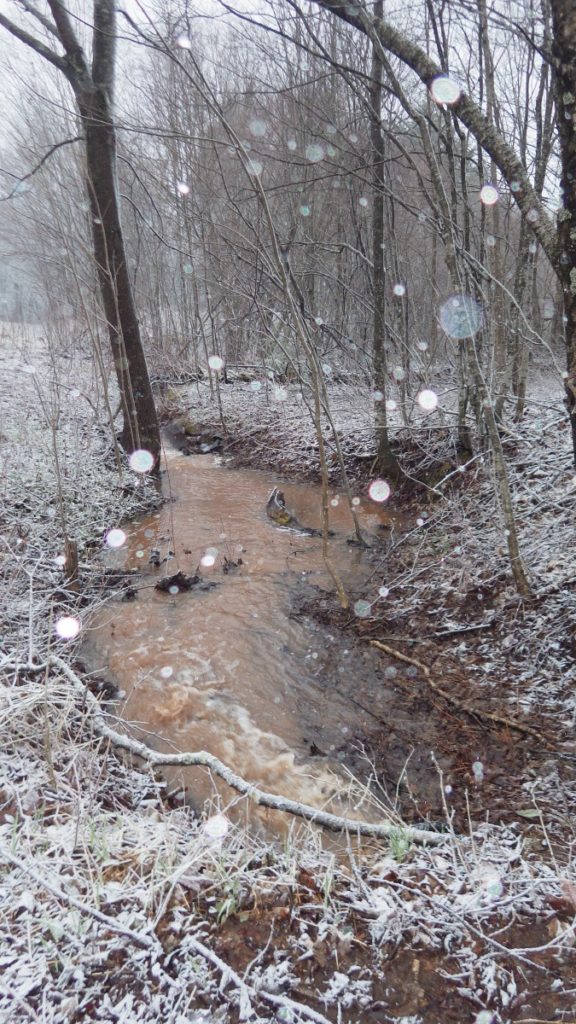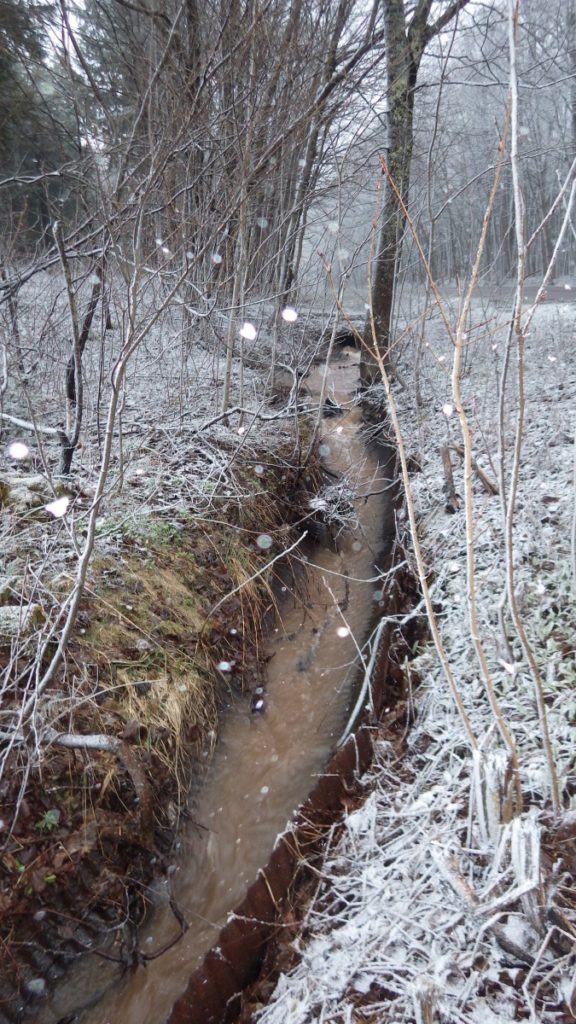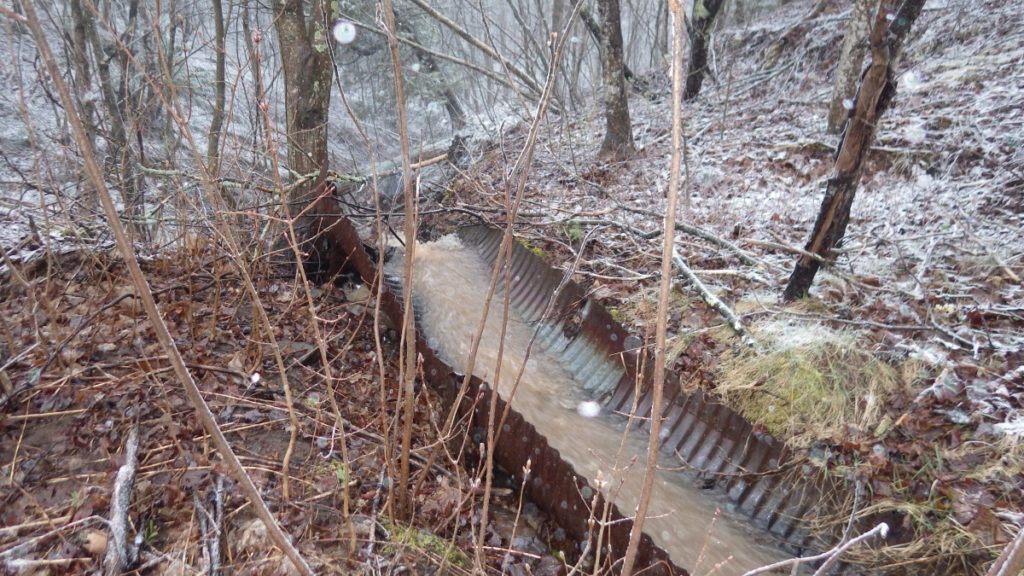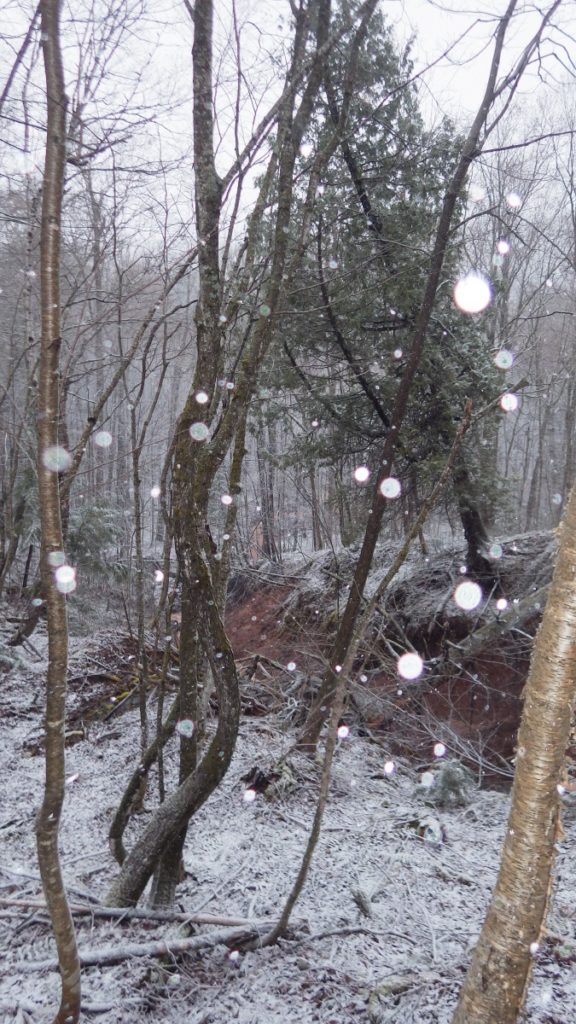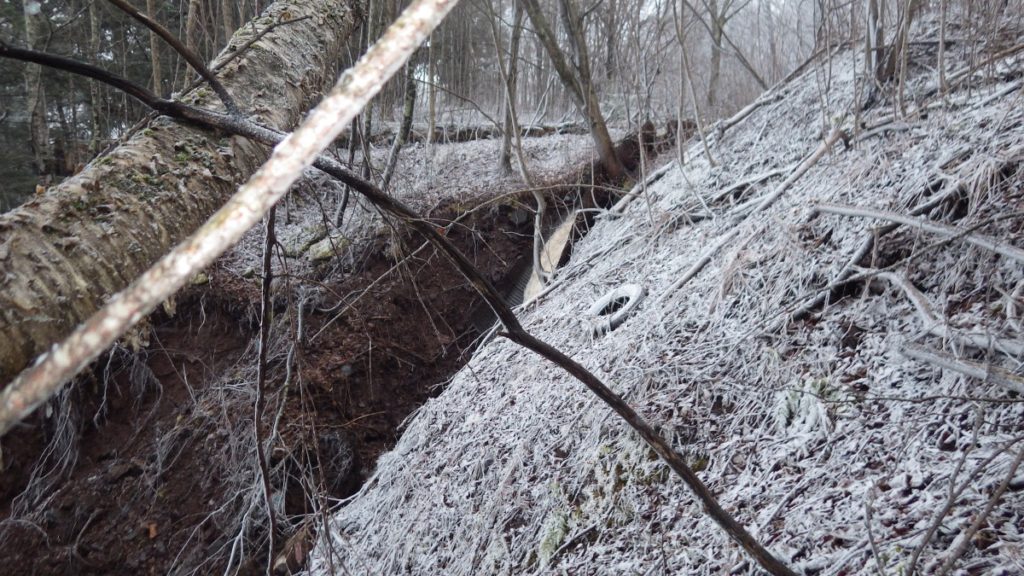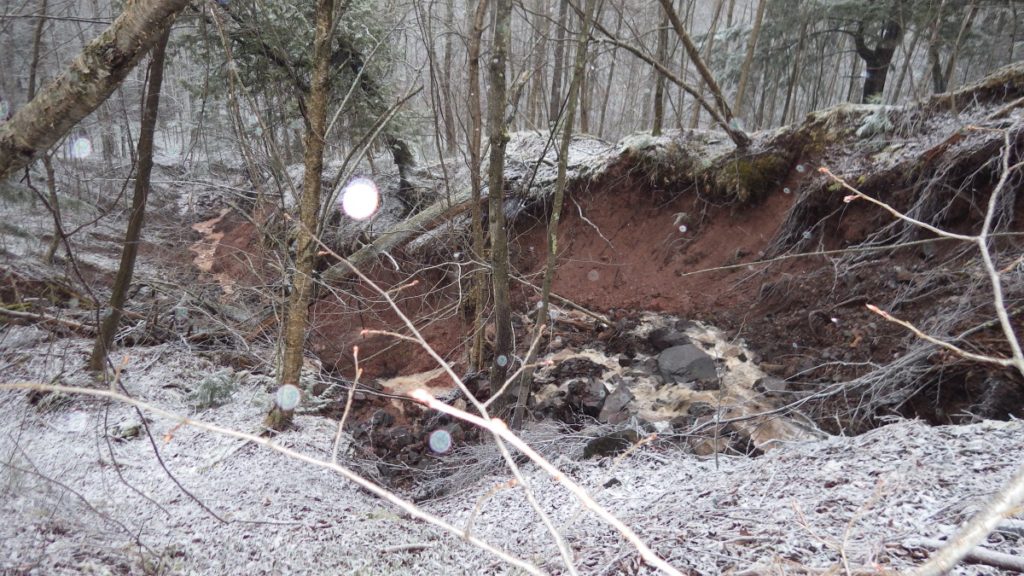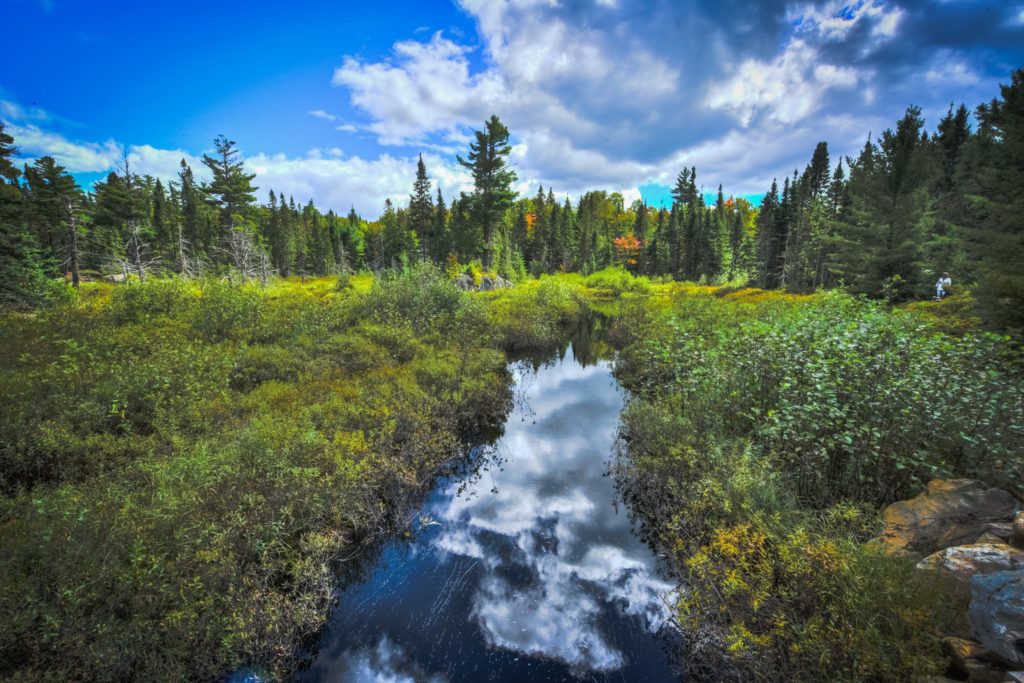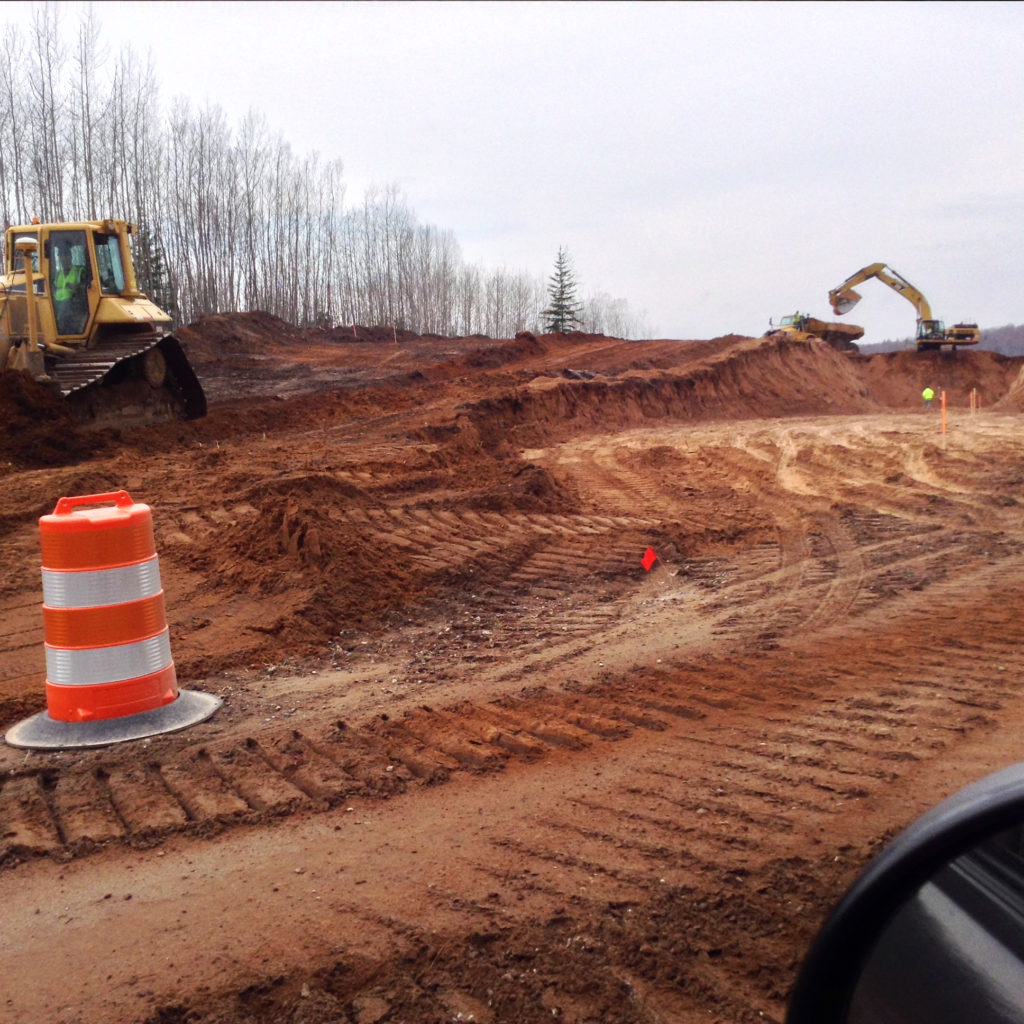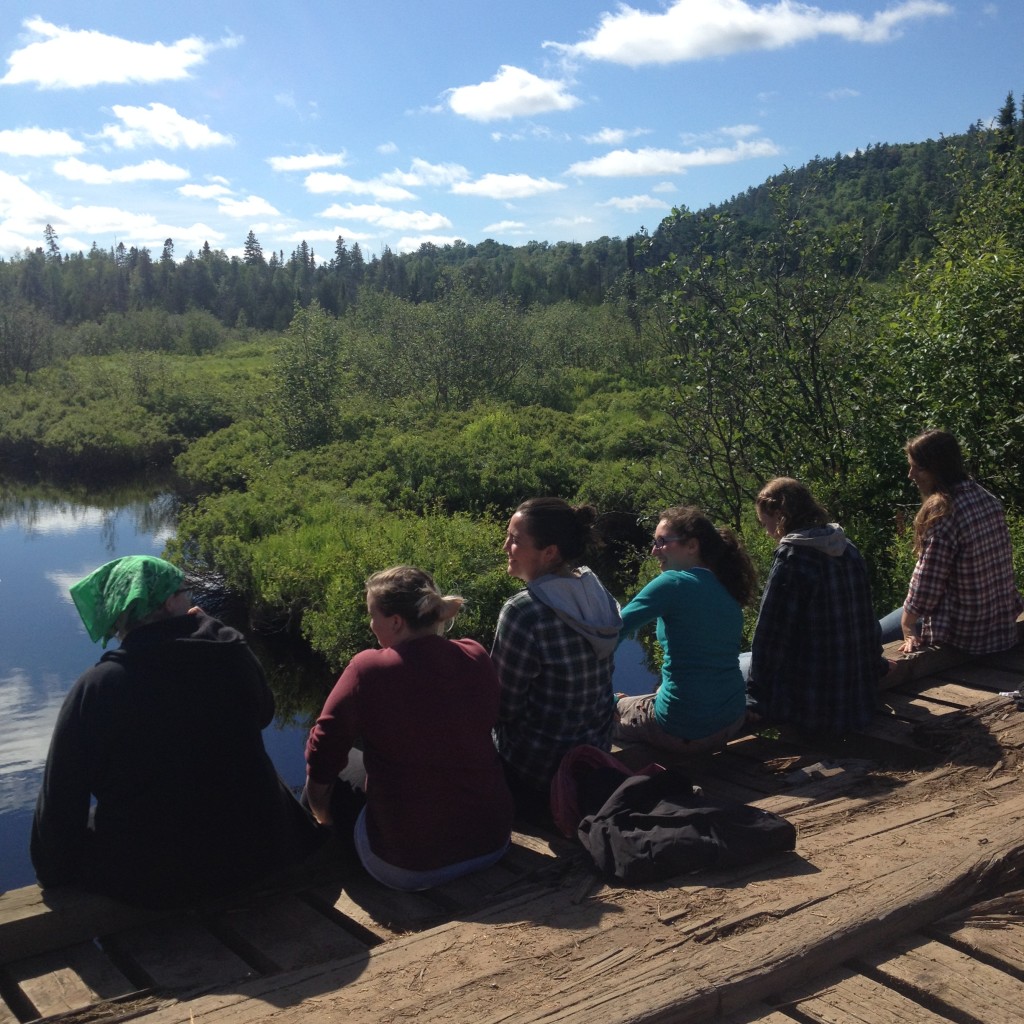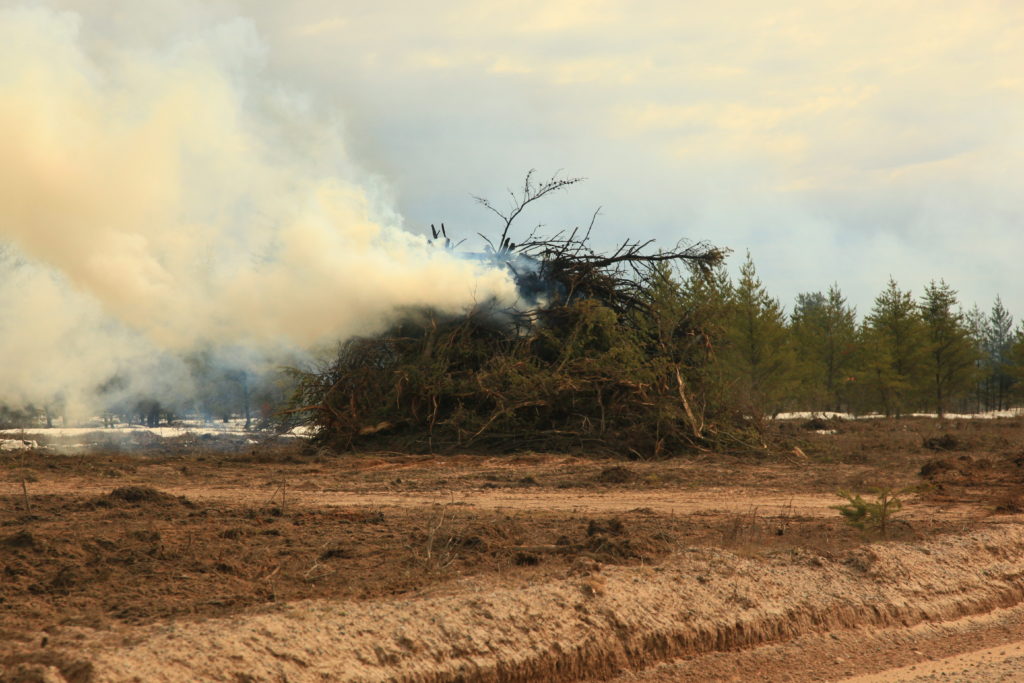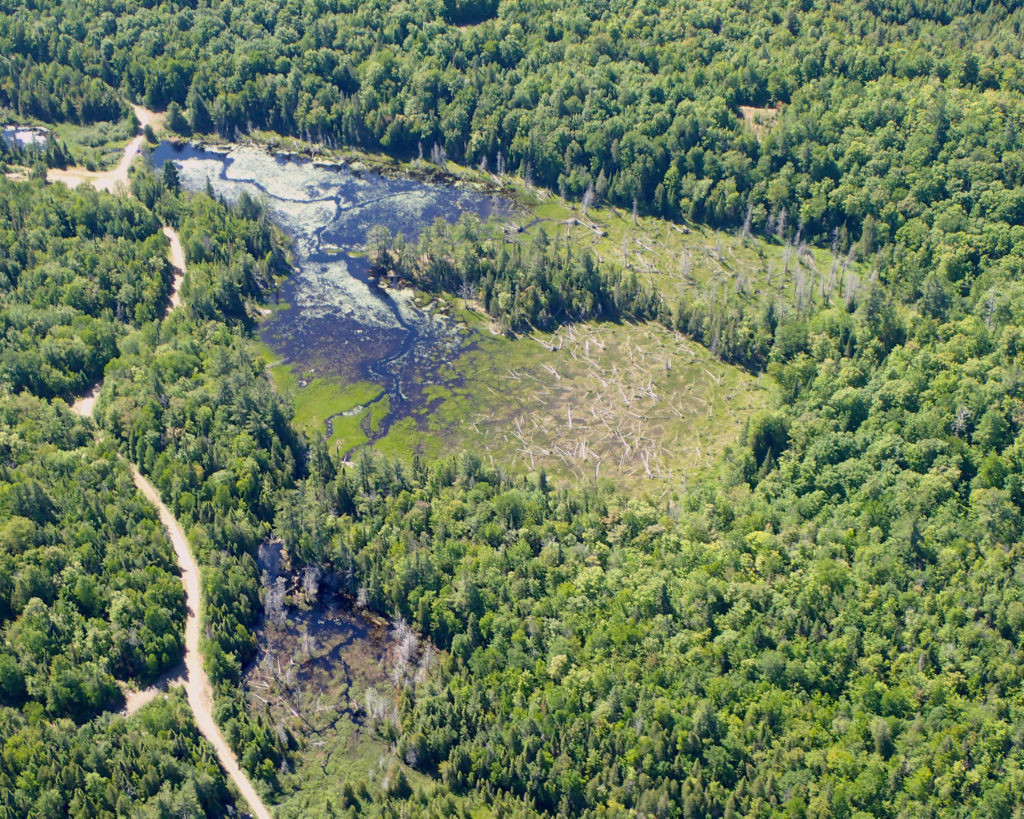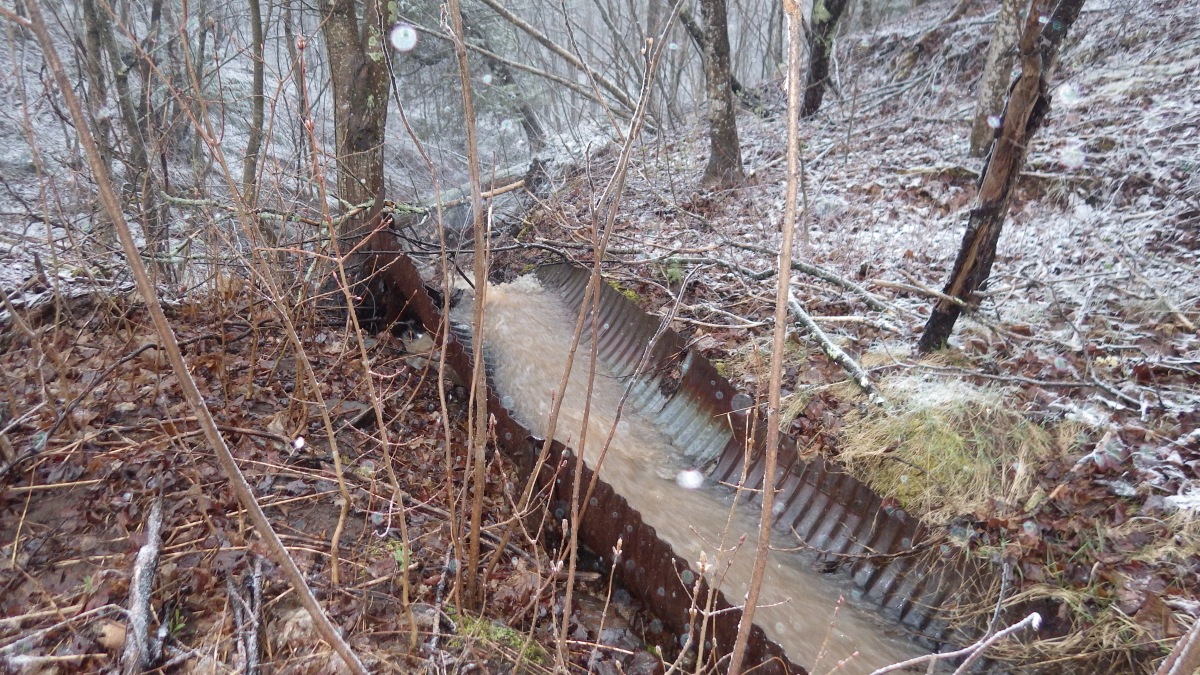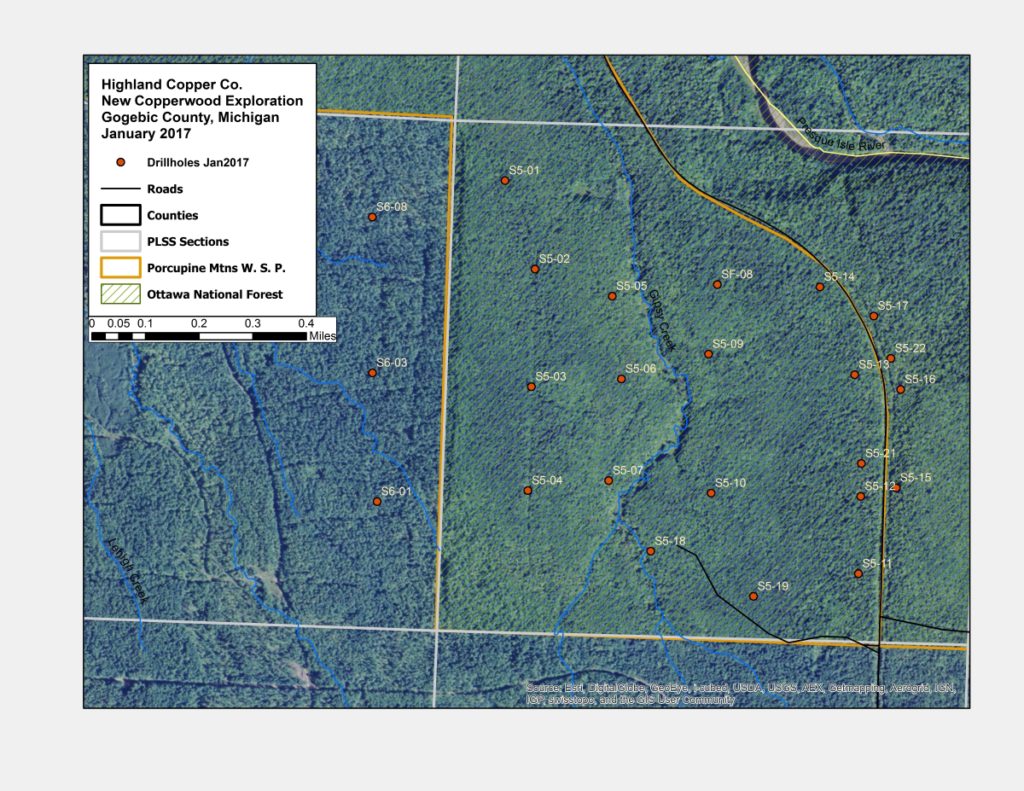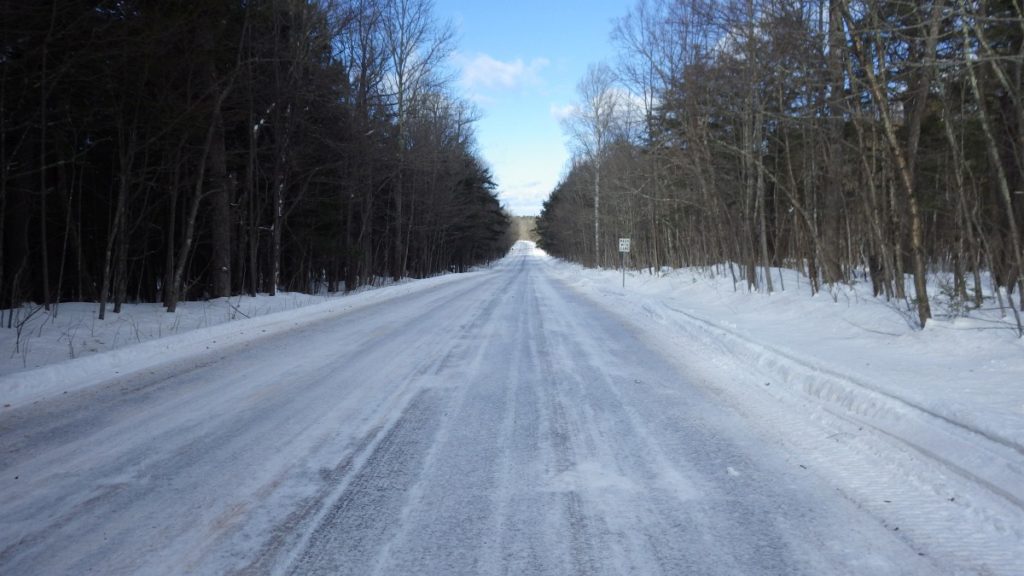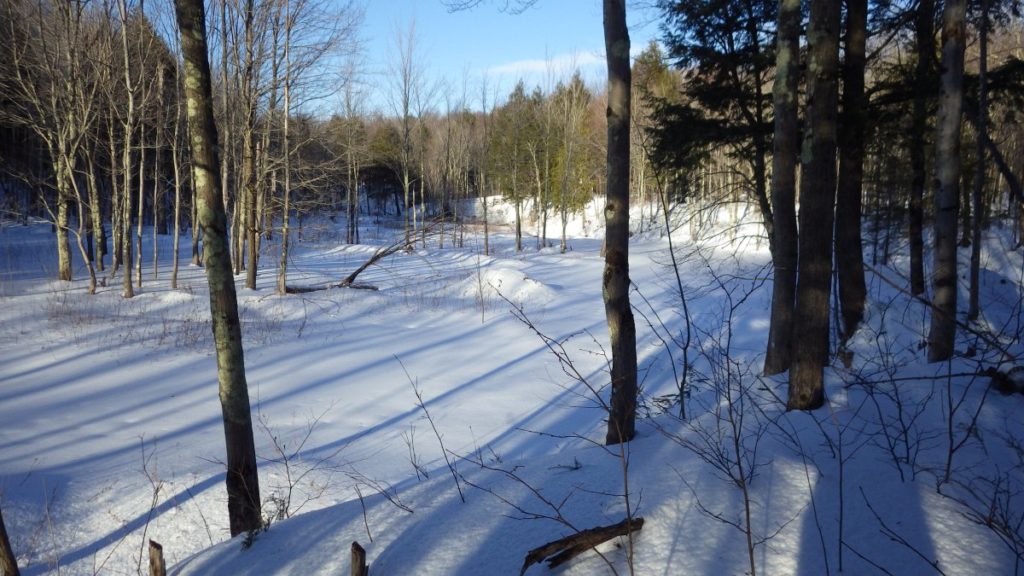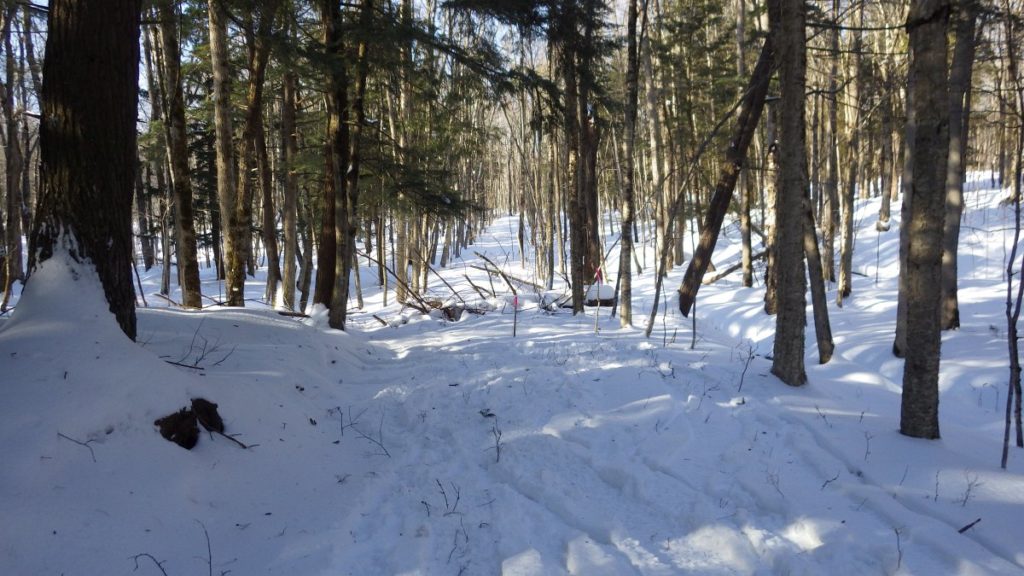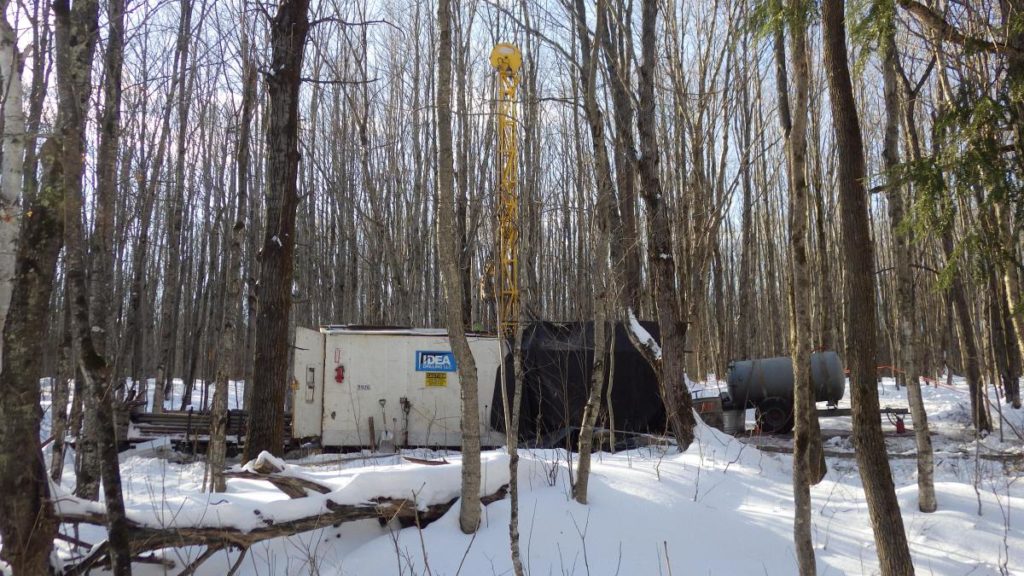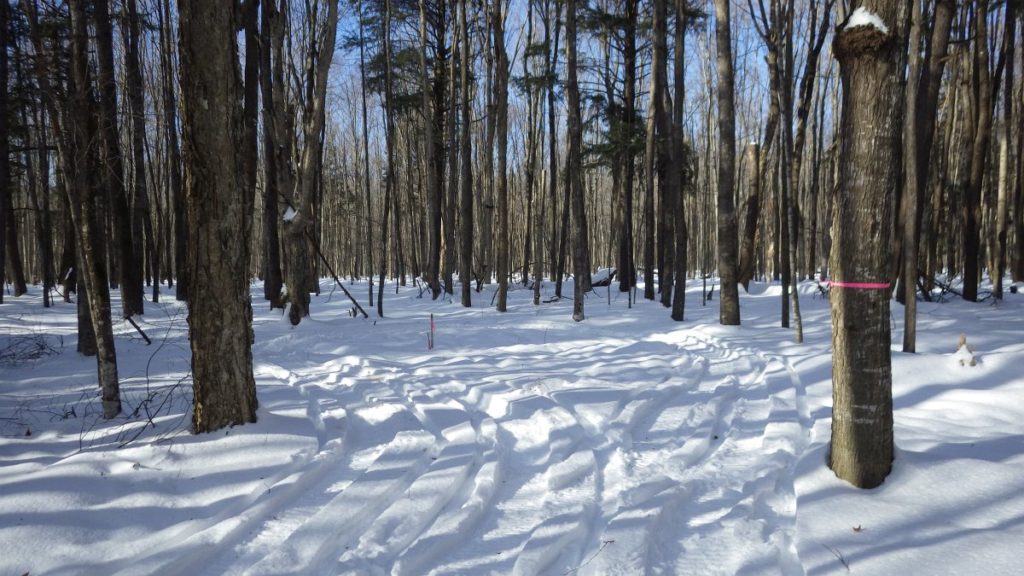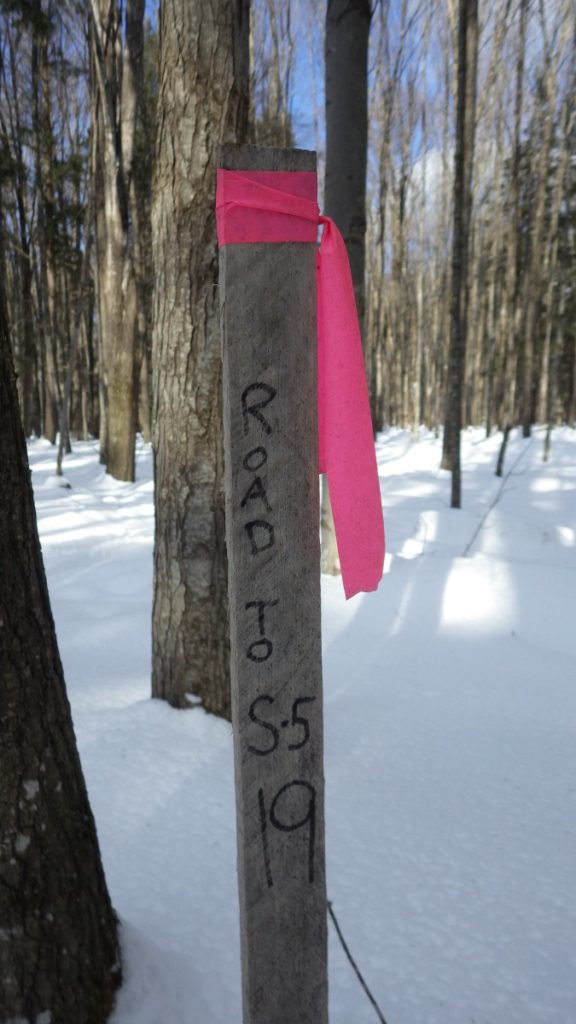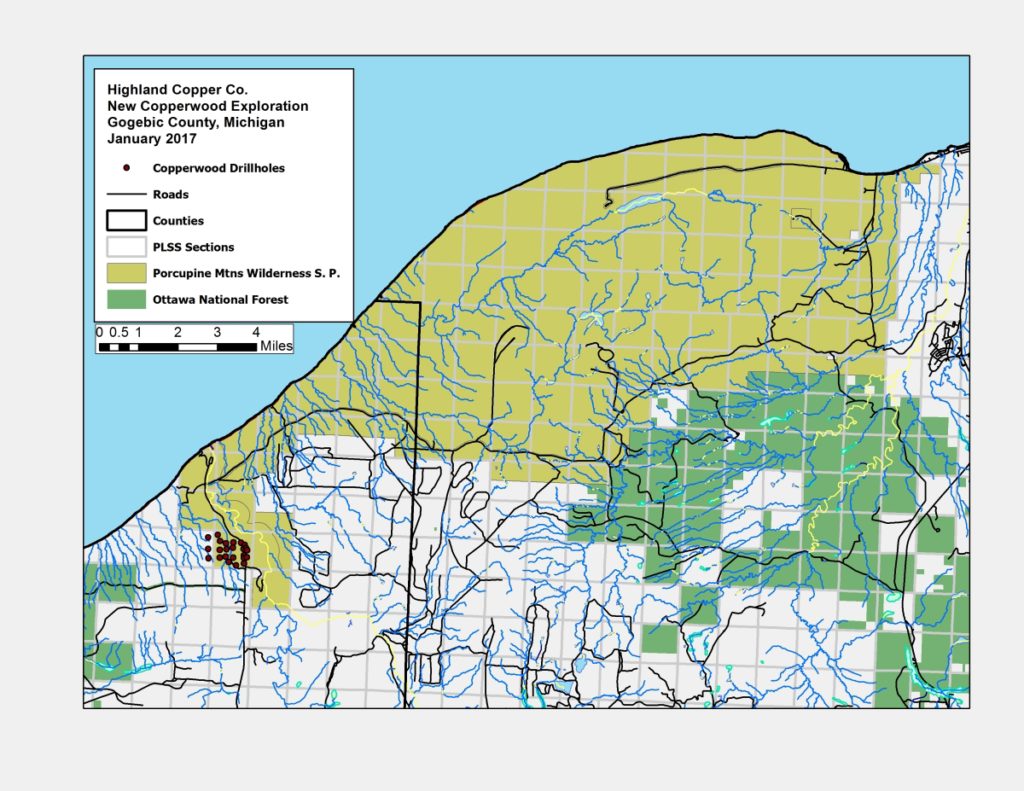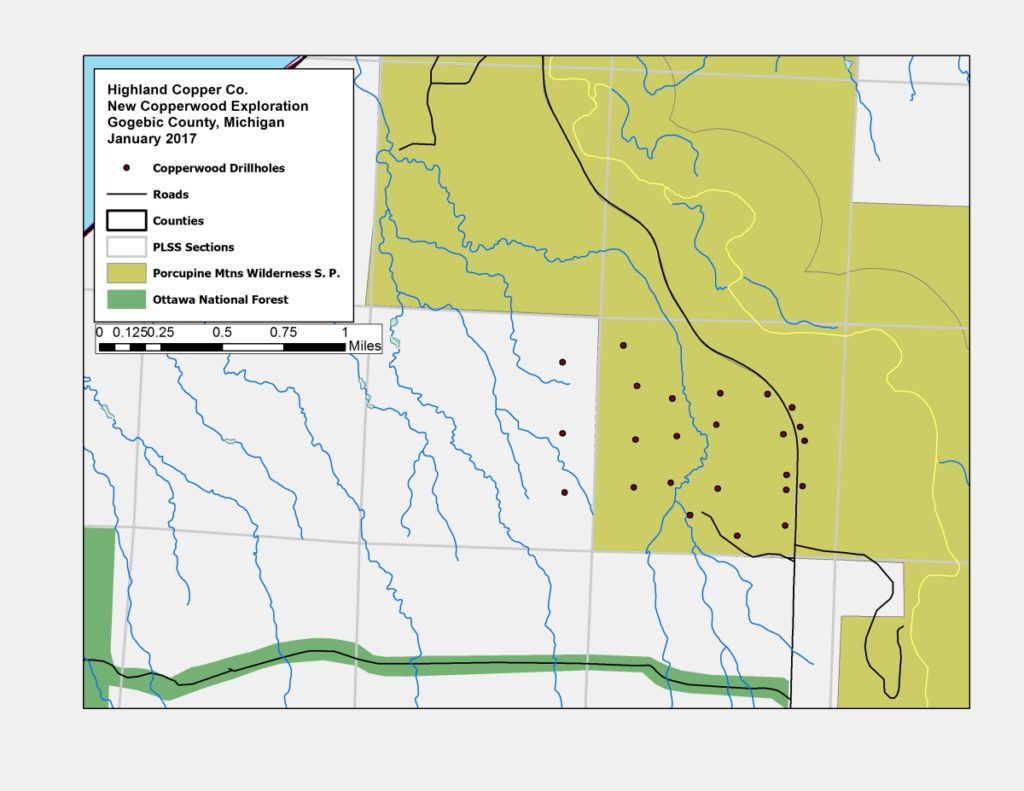Houghton, Michigan – Those who’ve been following the problems created by Highland Copper Company (Orvana Minerals) exploratory drilling in and around the Porcupine Mountains Wilderness State Park (“Porkies”) earlier this year may have noticed a recent flurry of media stories featuring the mining company’s officials, touting their purported remediation of land along the County Road 519 (CR-519) right-of-way. After churning up more than half a mile of snowmobile trail paralleling the road, the company went silent on the issue until recently, when they presented a new, and largely fictionalized version of what happened last spring, and the environmental damage that resulted in the Michigan Department of Environmental Quality (DEQ) halting Highland’s drilling activity on April 4.
Highland’s problems arose soon after they began drilling within the Park itself, on February 5th. Unseasonably warm weather forced the company to end drilling in the Park in late February, as required by their agreement with the Michigan Department of Natural Resources (DNR). Instead of halting *all* drilling in the area until conditions (thawing snow cover) improved – potentially delaying Highland’s exploration work for another year – the company charged ahead, and began drilling on a narrow strip of land along CR-519. This 466 foot “right of way” (233 feet from the center line in each direction) is owned by Gogebic County, although a legal description includes the east side of the right-of-way within the Presque Isle River Scenic area.
Highland’s contractor kept drilling for over two weeks, even as the warm spell continued. “What was the company thinking?” asked Horst Schmidt, president of the Upper Peninsula Environmental Coalition (UPEC). “Anybody could see that conditions had deteriorated. Highland’s drilling should have been stopped much sooner.”
In late March temperatures climbed into the 40’s and 50’s. The snowmobile trail used to access drilling sites on the east side of CR-519 soon thawed, and was churned into mud soup. Only after the heavy equipment sank several feet into the muck did the company admit that spring had arrived. The facts, damages, and the dates are undisputed.
Highland Copper’s most recent press conference presented company officials as clueless regarding the location or extent of wetlands, and unable to discern that the ground was thawing. Snowmobilers gave up and gravel roads were weight-restricted for spring breakup, but Highland continued drilling into early April.
The drilling stopped only after concerned citizens from the UPEC Mining Action Group (MAG) published a press release, documented the environmental damages, and shared the photographs on their website. MAG’s alarming photographs of the damage were quickly picked up by the media, and brought to the attention of the Michigan DEQ. The DEQ promptly sent staff from the Marquette office to the site on Tuesday, April 4. The company was required to suspend work that day, and soon after were issued a Violation Notice by the DEQ.
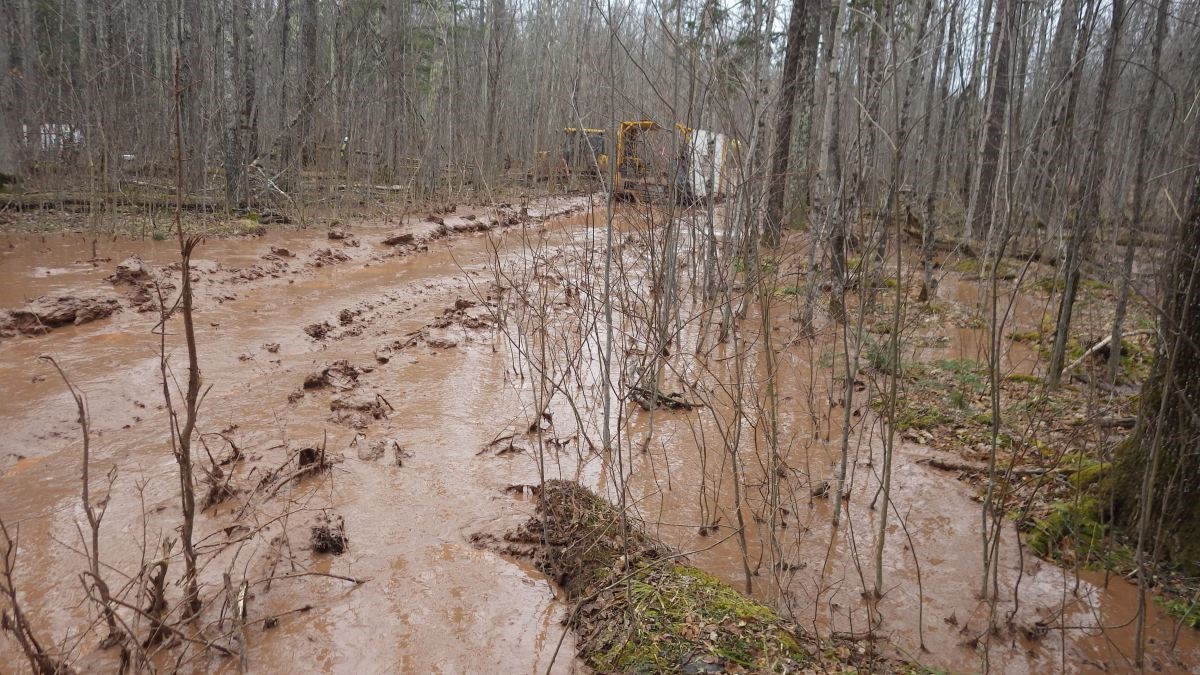
Highland now maintains they didn’t anticipate the spring warm-up, and didn’t know that much of the land was wetland until they received a report from their consultant, King & McGregor. Meanwhile they turned ½ mile of snowmobile trail into a muddy mess. April 2, 2017.
During their recent media event, Highland Copper’s Vice President of Project Development, Carlos Bertoni, said “When we were drilling here in the spring, early April, the weather became much warmer than we expected.” This is an unbelievable assertion, given that the spring thaw began more than a month earlier.
Bertoni also stated, “Myself as a geologist I could not tell you what is wetland and what is not wetland,” The claim that Highland did not realize they were severely damaging the land until their consultant (King & McGregor) completed a report pointing out that sections of the trail crossed wetlands is also not credible.
“Don’t you think they should be required to hire consultants before they drill?” asked UPEC board member Nancy Warren, who had also been monitoring the site. Neither the company nor the DEQ made any mention of the King & McGregor report at the time.
Now, five months after sediment eroded into protected wetlands and mud flowed down the ditches, what is the status of the company’s environmental remediation effort? First they threw straw bales and bundles into the ditch to slow down the flow of water. Then they smoothed out the ruts and seeded English rye grass (not “native plants” as Bertoni claimed). The damage is still clearly visible along the trail as well as away from the road. Mud that ran north along the ditch and off the site last spring ended up on the floodplain of the Presque Isle River.
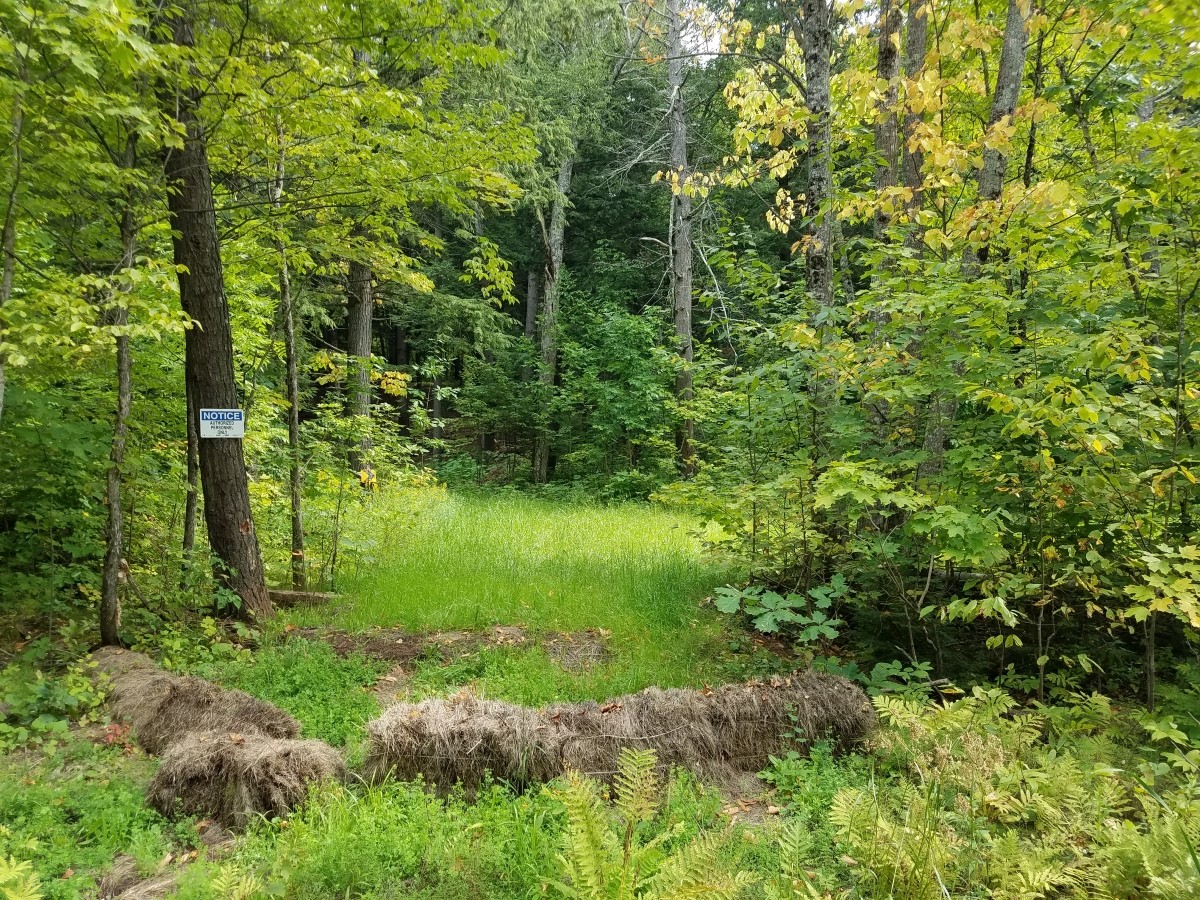
Five months later, the site has been stabilized. The trail (behind the hay bales) has been seeded with English rye grass, and native plants are slowly re-establishing on their own. September 3, 2017.
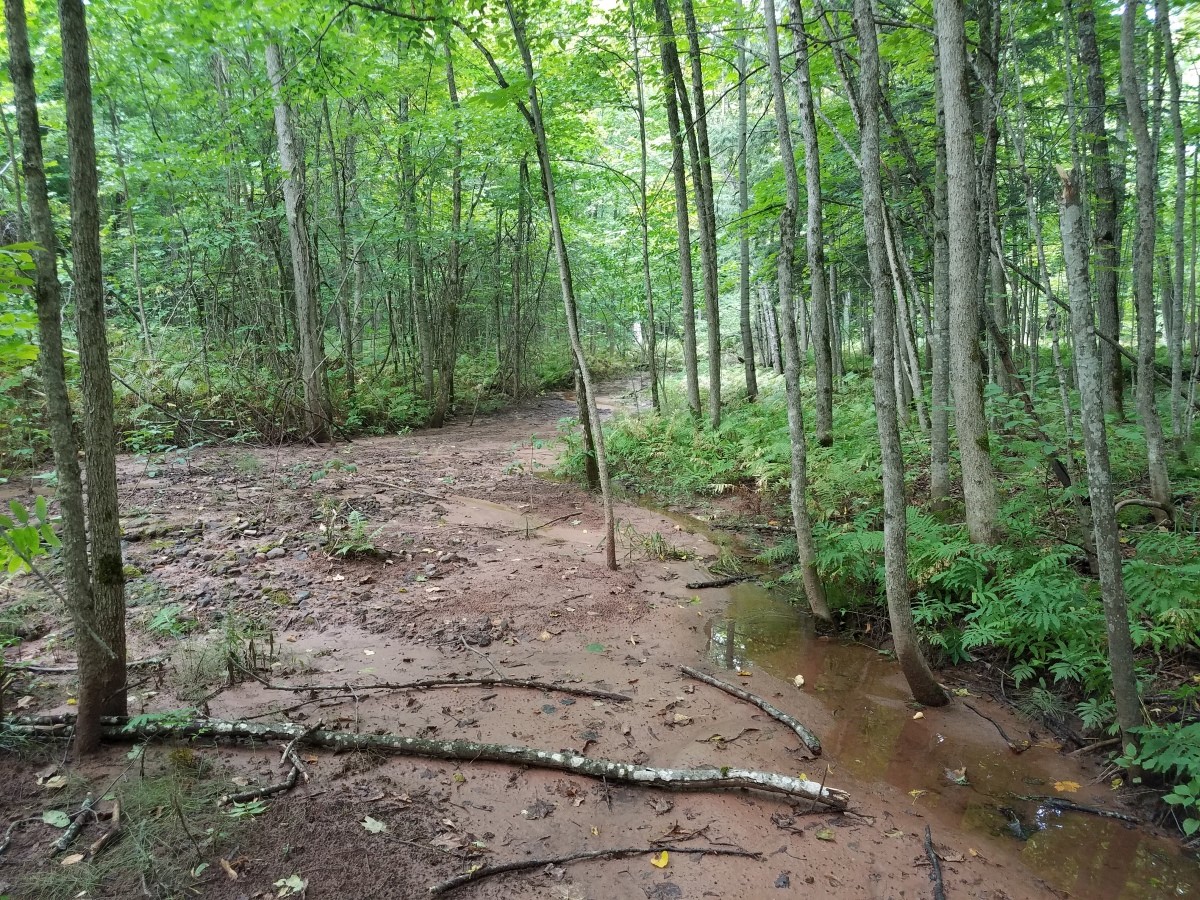
The company was cited for allowing muddy runoff to reach Gipsy Creek, on the southern end of drilling site. However, much of the mud flowed north along the ditch and down the wide ravine of the Presque Isle River, where it was deposited on the floodplain within the Park. Since the growing season is ending, this area continues to be susceptible to erosion going into winter. September 3, 2017
Why are MAG environmentalists concerned about a seemingly minor incident at the far western end of the Porkies? If Highland Copper (or their contractors) will not do the right thing when they think no one is watching, what will happen when they actually start mining? Since their Copperwood mine project sits on the shore of Lake Superior, the stakes are extremely high. Highland is already talking about mining not only next to, but underneath the Porcupine Mountains Wilderness State Park, which makes the project exponentially more risky.
In their original joint press release, the DNR and DEQ failed to acknowledge the critical importance of citizen vigilance in this situation. “I’m outraged that volunteer activists from the Mining Action Group were never recognized for monitoring Highland’s irresponsible drilling activities and documenting the damages to Michigan’s natural resources. I strongly feel that the vital watchdog role played by concerned citizens — environmentalists, not the state — must not be scrubbed from the official record.” said Kathleen Heideman, UPEC board member and a member of the Mining Action Group (MAG).
“Highland’s actions are highly irresponsible. If they are going to make this much of a mess at such an early stage in the project, how can we expect them to mine responsibly? If they can’t even be bothered to pay attention to the condition of the land around them, how can we trust them to not pollute Lake Superior? Carelessness is not a culture that will change overnight, and this incident makes it appear that Highland has developed a culture of carelessness,” said Nathan Frischkorn, a 2017 Fellow working with the Mining Action Group.
“This incident shows once again that mining companies are so interested in appearances and retaining complete control that when forced to act, they may go so far as to fabricate their own stories.” said UPEC president Horst Schmidt.
RELATED NEWS STORIES
Smithsonian Magazine (February 17, 2017)
http://www.smithsonianmag.com/smart-news/mining-exploration-begins-michigans-porcupine-mountains-180962108/
Michigan Department of Natural Resources (April 6, 2017)
State agencies addressing erosion concerns at Porcupine Mountains
https://content.govdelivery.com/accounts/MIDNR/bulletins/192acad
Keweenaw Now (May 12, 2017)
DEQ cites Highland Copper’s wetlands, soil erosion violations from mining exploration in Porkies, along CR 519
http://keweenawnow.blogspot.com/2017/05/deq-cites-highland-coppers-wetlands.html
UP Matters.com (August 8, 2017)
http://www.upmatters.com/news/ local-news/highland-copper- company-provides- rehabilitation-work-update-on- county-road-519/785568630
ABC News 10 (August 9, 2017)
Exploratory drilling rehabilitation efforts underway
https://abc10up.com/2017/08/09/exploratory-drilling-rehabilitation-efforts-underway/
Fox News TV 6 Marquette (August 9, 2017)
http://www.uppermichiganssource.com/content/news/Highland-Copper-rehabilitating-wetlands-in-the-Porcupine-Mountains-439515913.html
The Daily Mining Gazette (August 11, 2017)
Drilling Fix Media Show: Gazette not invited to mine company’s unveiling of drill damage repair within park
http://www.mininggazette.com/news/2017/08/drilling-fix-media-show-gazette-not-invited-to-mine-companys-unveiling-of-drill-damage-repair-within-park/
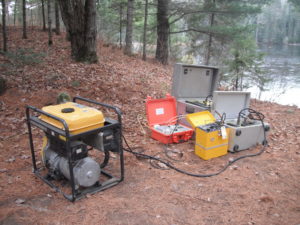 In closing, we repeat the statement made by the DNR’s Brian Roell, concerning the unexamined cumulative impacts of mineral leasing and the fact that “present and anticipated increase of mining exploration activity in this area could individually and/or cumulatively adversely impact the long-term viability of various wildlife populations in this region.”
In closing, we repeat the statement made by the DNR’s Brian Roell, concerning the unexamined cumulative impacts of mineral leasing and the fact that “present and anticipated increase of mining exploration activity in this area could individually and/or cumulatively adversely impact the long-term viability of various wildlife populations in this region.”
